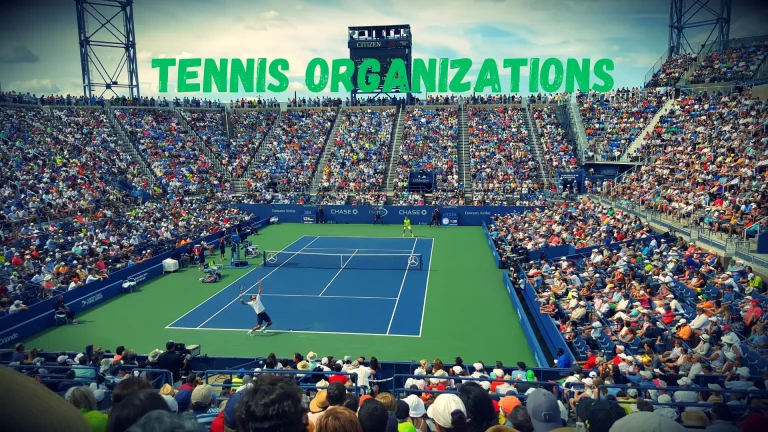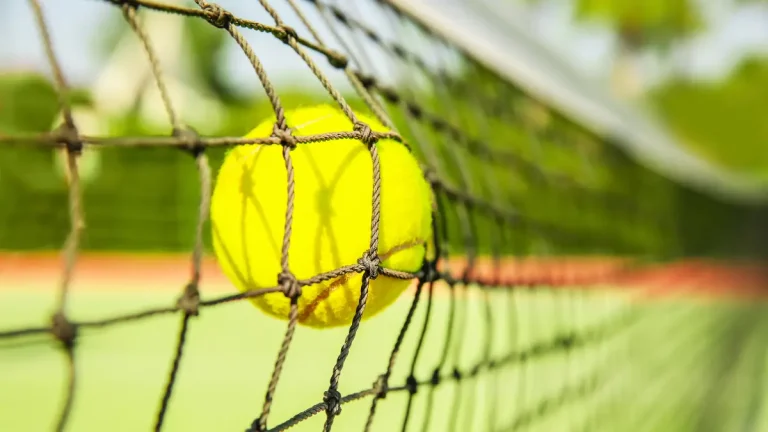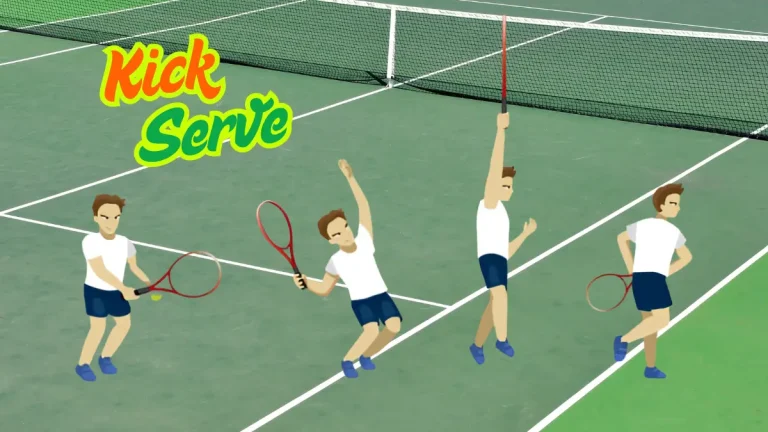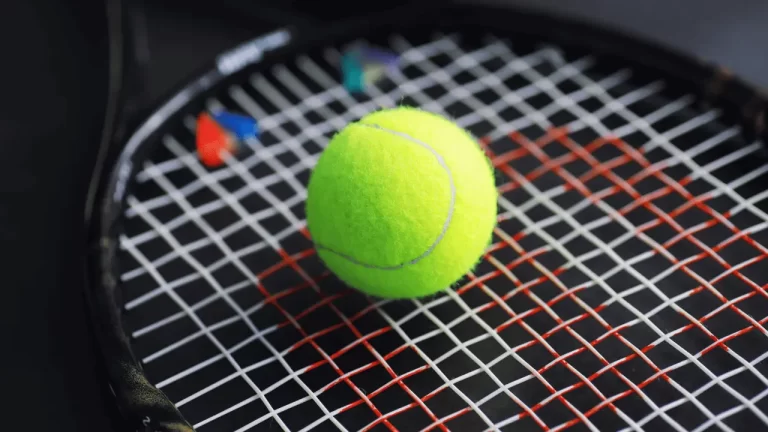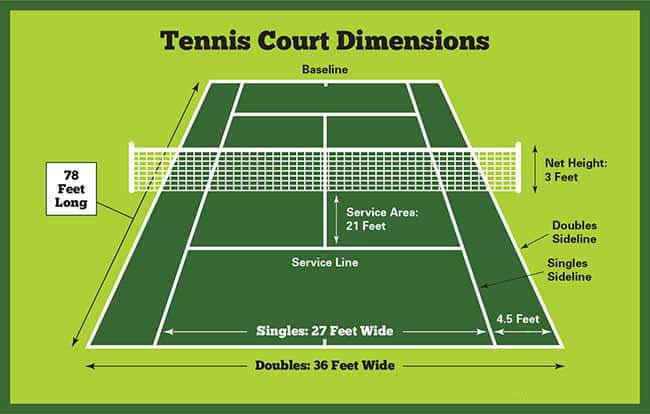Parts of a Tennis Racket – Explained with Diagram 2025
When I started learning tennis, I first encountered confusion about the different parts of the tennis racket and other technical terms. Grip, string, tension, head, and guard seem strange to me as I never knew them before.
A tennis racket has many parts, including these four major parts: the frame, the head, the shaft and throat, and lastly, the handle. These four parts influence players’ performance an incredible deal.

Tennis is an active, exhilarating, and dynamic sport requiring skill, technique, and the proper equipment. The tennis racket, a player’s primary gear, is a detailed and specially designed piece of sporting equipment. Its construction and components play a considerable part in a player’s performance on the tennis court.
To play the best tennis, a crucial and important thing is having the right gear, its usage, and knowing the function of each part. Do you know all the core parts of a tennis racket? If not, let’s continue to learn about the different parts of the racket.
Different Parts Of a Tennis Racket And Their Effects on Game
Below described are the various parts and components of a tennis racket. Generally, a tennis racket has four main parts: the frame, the head, the shaft, and the handle. These three parts are further divided into small components.
This information will help your kids and beginners understand the sport, its major equipment, and its individual components. You can have a closer look at the parts diagram and relate its description to each of the sections.
Parts of a Racquet Explained with Parts Diagram
Part of a tennis racquet can only be understood either by having a racket in hand or the parts diagram. Each part has its own significance and importance that plays an important role in the performance while playing tennis. You can understand all the parts of the tennis racquet explained below.
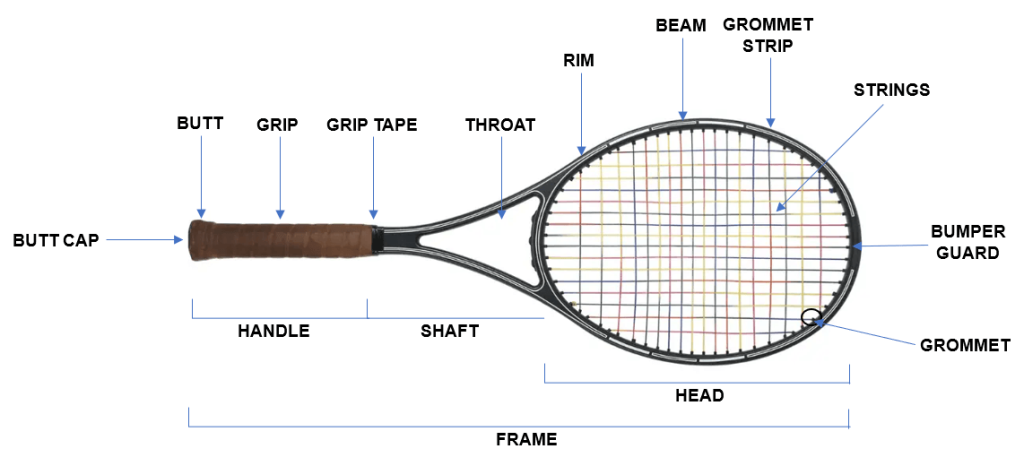
The Frame:
The frame, which is the main component of a tennis racket, is typically constructed out of lightweight materials like graphite, carbon fiber, or a mix of other composites. Its primary purpose is to provide structural stability and rigidity while at the same time minimizing its weight.
The frame of the racket comes in different shapes, including traditional oval and more modern, oversized options. The shape and material of the frame can affect a player’s power, control, and maneuverability on the court.
The Head:
The head of the tennis racket is the top part of the frame, where the strings are attached. Racket heads come in various sizes, with the most common options being midsize (85-95 square inches), mid-plus (95-105 square inches), and oversized (over 105 square inches).
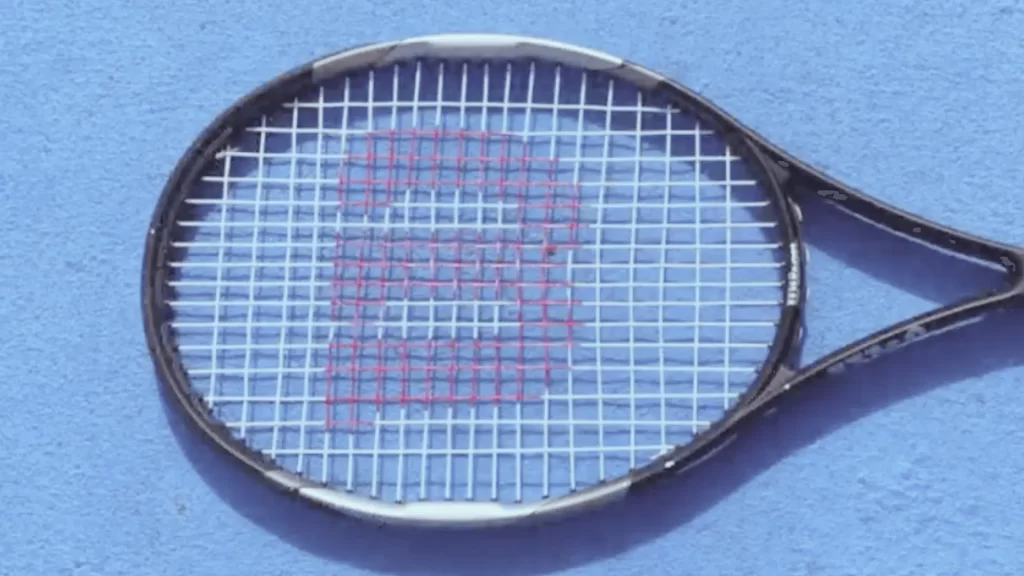
A player’s game is greatly affected by head size. While a smaller head offers more control and precision, a larger head offers more power and a wider sweet spot.
The head of the tennis racket further divides into six more components:
Strings:
The strings are a crucial part of the racket, as they directly influence a player’s ability to hit the ball. Tennis strings can be made from materials like nylon, polyester, natural gut, or a hybrid combination. Different types of strings have different tension, strength, and impact on the game. String tension, string pattern, and gauge (thickness) all impact the performance of a tennis racket.
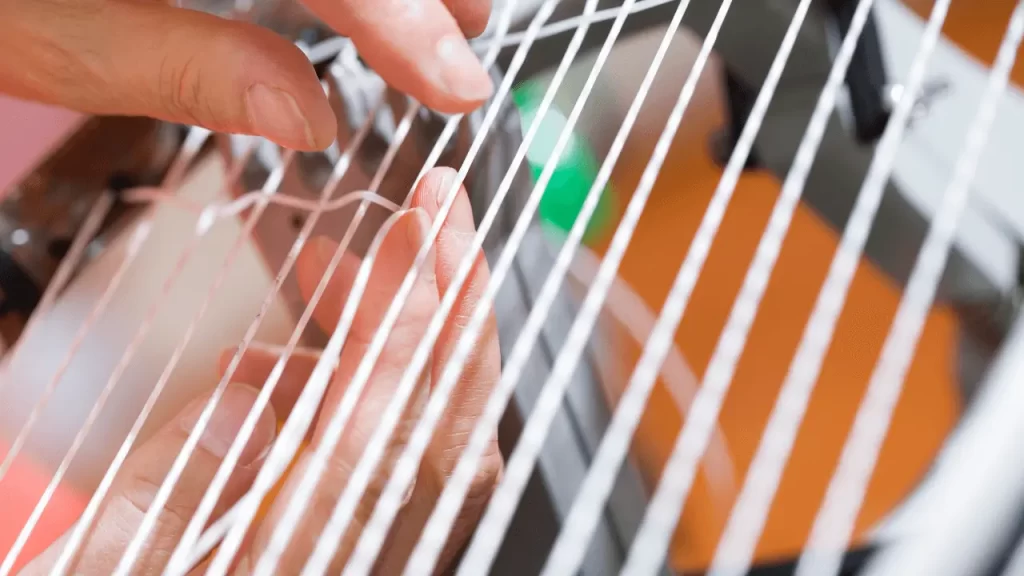
High tension provides control and precision, while low tension offers power and spin. String patterns refer to the arrangement of the strings on the racket’s head, affecting the amount of spin generated. The gauge of the string determines its durability and playability.
Dampener:
A dampener is a tiny accessory that is put on the strings of a tennis racket. It helps in reducing string vibrations, minimizing the amount of feedback or “ping” sound caused by ball impact.
Bumper Guard:
This is a protective strip or guard that is wrapped around the top of the tennis racket head. The bumper guard helps protect the racket from damage during contact with the ground or other surfaces.
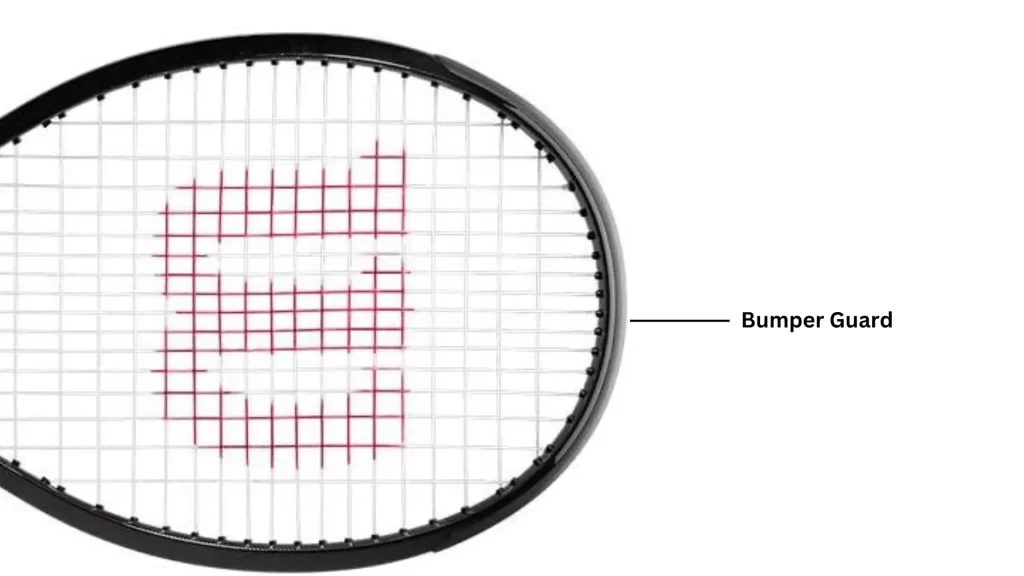
Beam:
The beam refers to the width and thickness of the racket’s head. It can differ from different racket models. The beam also affects the tennis racket’s stiffness, power, and control.
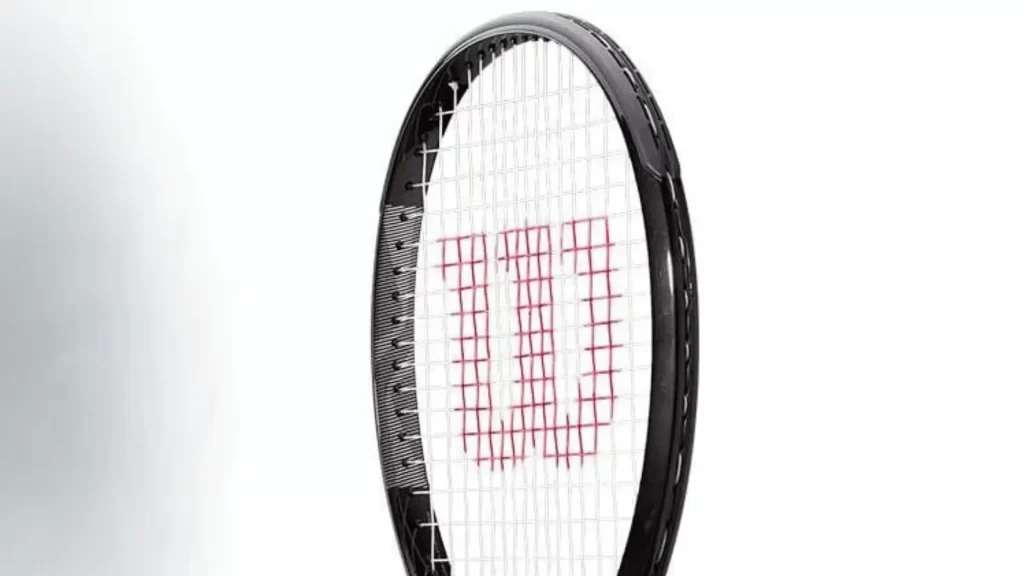
Rim:
The rim of a tennis racket is the outer edge or border of the racket head. This is the part where strings are tied or fixed. It helps provide stability and structure to the racket. The rim greatly influences a player’s performance and is said to be one of the most important components of the racket head.
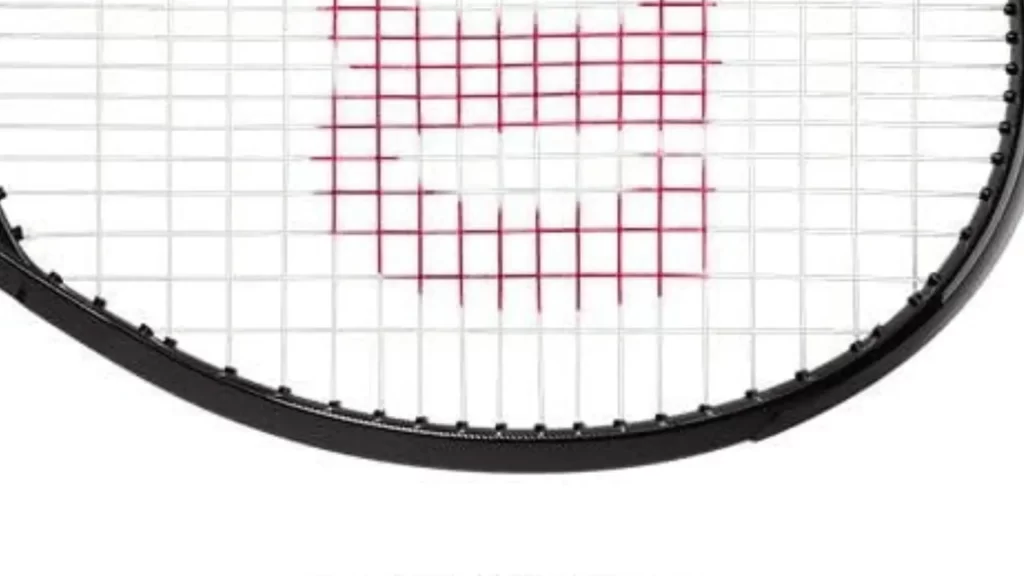
Grommet Strip:
Grommets are small plastic or metal pieces placed into small holes in the frame of the tennis racket. They serve as protective sleeves for the tennis strings. The grommet reduces friction and prevents strings from wearing against the racket’s harsh areas. The wider the grommet, the more power your rackets generate. The narrower the grommet, the more control your racket offers.
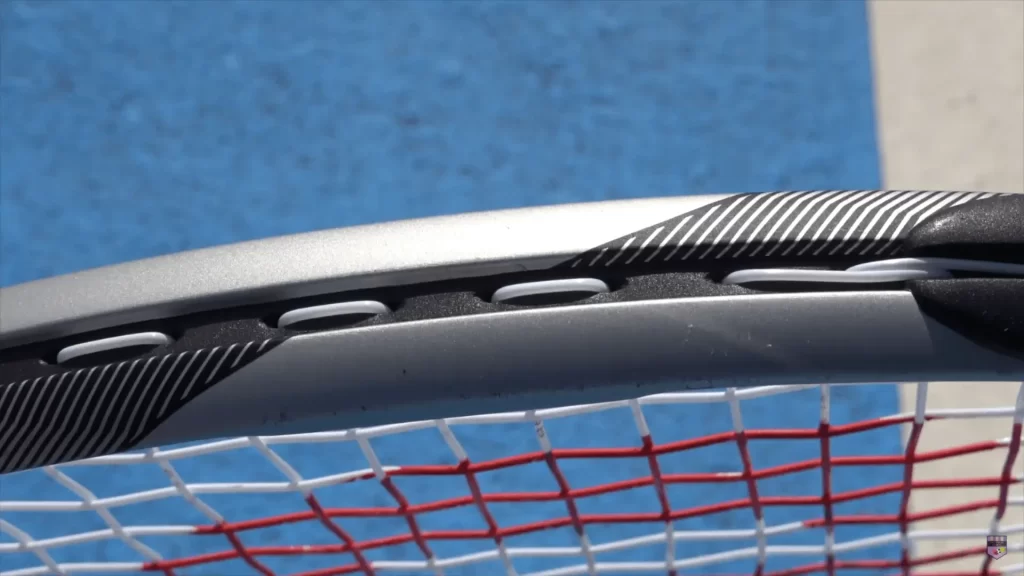
The Shaft and throat:
The shaft of a tennis racket refers to the primary compartment of the racket’s handle that extends downward from the grip. It is usually cylindrical in shape and provides stability, control, and handling to the player. The shaft can vary in length and flexibility, affecting the overall feel and performance of the racket.
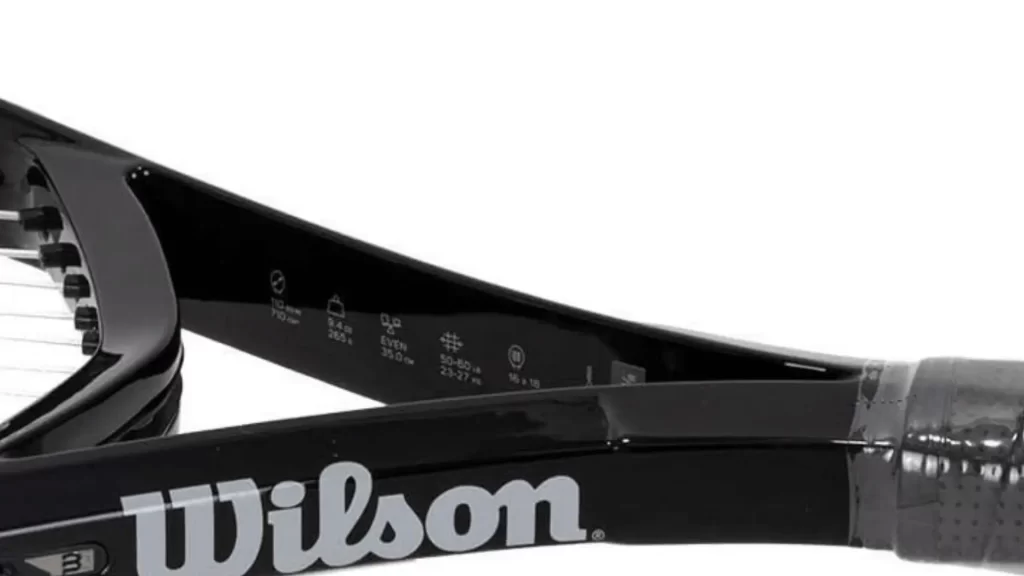
The throat of the racket binds the head and the handle. It is often seen in a triangular shape, contributing to the racket’s stability and aerodynamics. Some rackets have open throats to enhance spin, while others feature closed throats for improved control.
The Handle:
The handle of a tennis racket is yet another part of the tennis racket that the player holds. It is usually wrapped with an overgrip for added comfort and control. The size and structure of the handle can influence a player’s ability to generate power and control their shots.
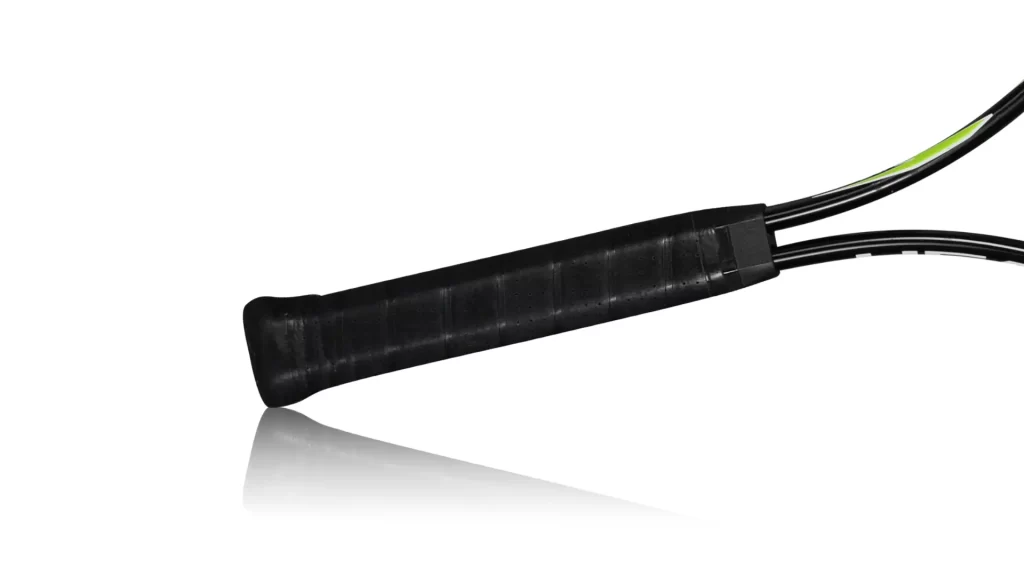
To keep the racket handy and powerful, the right size of handle is a must. There are different sizes of handles available for different types of players. They choose the handle according to their needs and skill level.
Grip:
The grip is the portion of the racket that the player clasps while playing. It is commonly made of a synthetic material. The grip also comes in various sizes to accommodate various hand sizes. A standard grip offers comfort and control and allows players to retain a strong hold on the racket while executing strokes. Players often customize the grip size and may add overgrips for extra cushioning and traction.
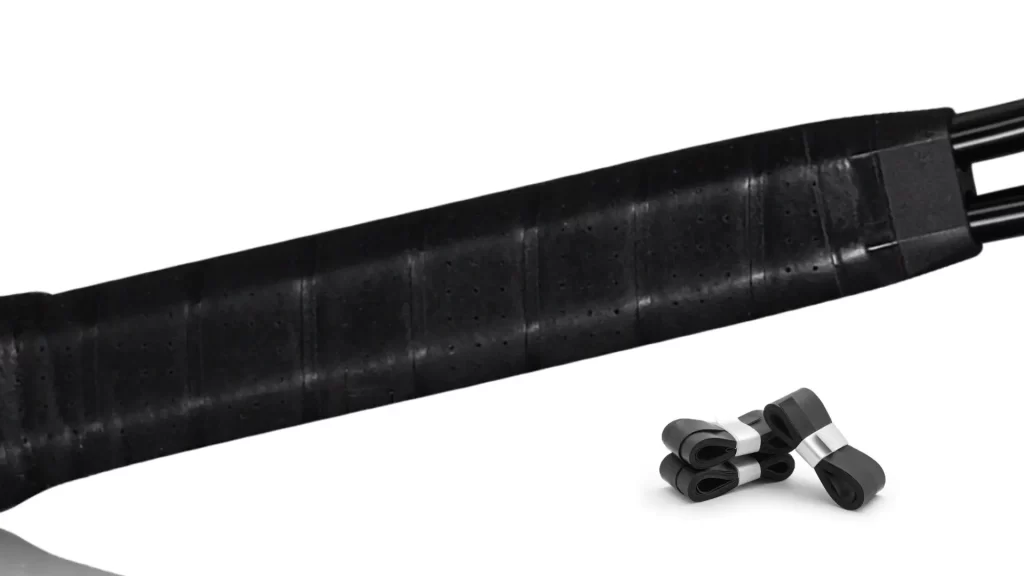
Having a firm grip can offer you more control over your game as it defines the way you hold the racquet.
Grip tape:
This is a type of adhesive tape that is applied over the grip for added comfort, absorption of sweat, and durability. This is optional, but most players prefer using a grip tape over the actual grip for better cushioning.
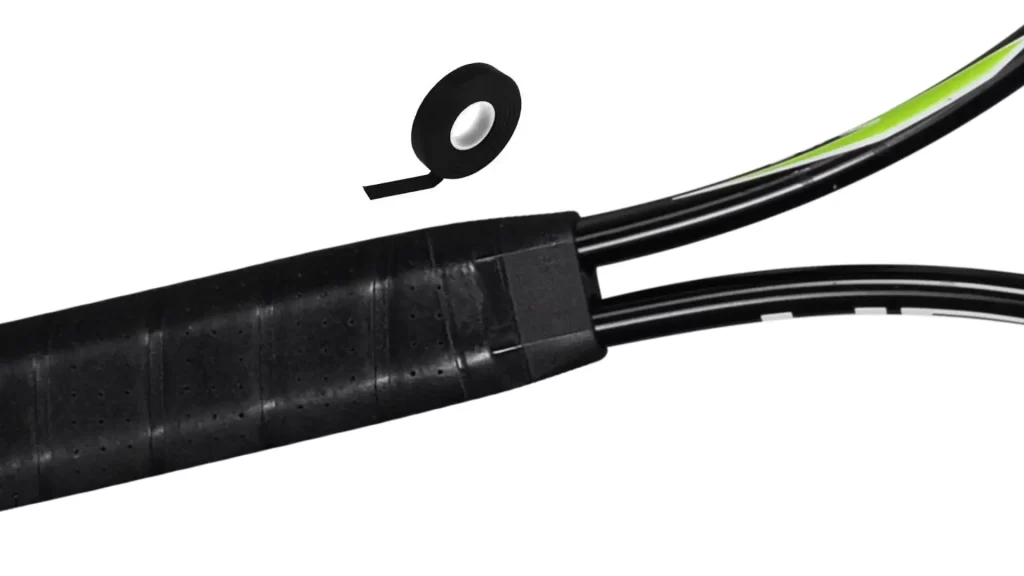
Butt:
The butt of a tennis racket refers to the bottom of the handle. It is the part you hold onto during a tennis stroke.
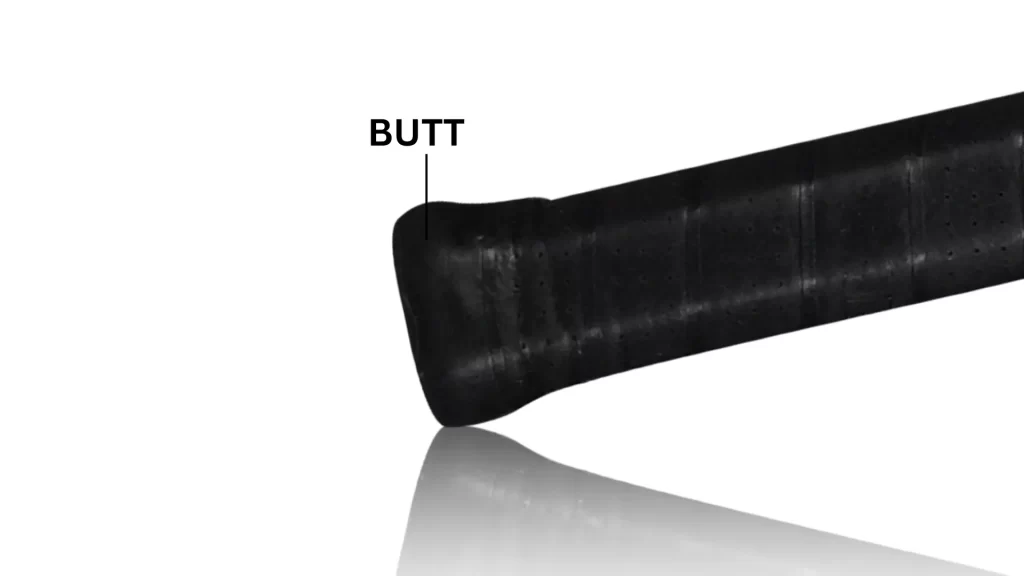
Butt Cap:
The butt cap is found at the bottom of the racket’s handle and works as a counterbalance to the head, being the lowest part of the handle. It often includes a player’s preferred grip size and is used to anchor the racket to the player’s hand. Some players personalize their butt caps with their names or logos for a distinctive touch.
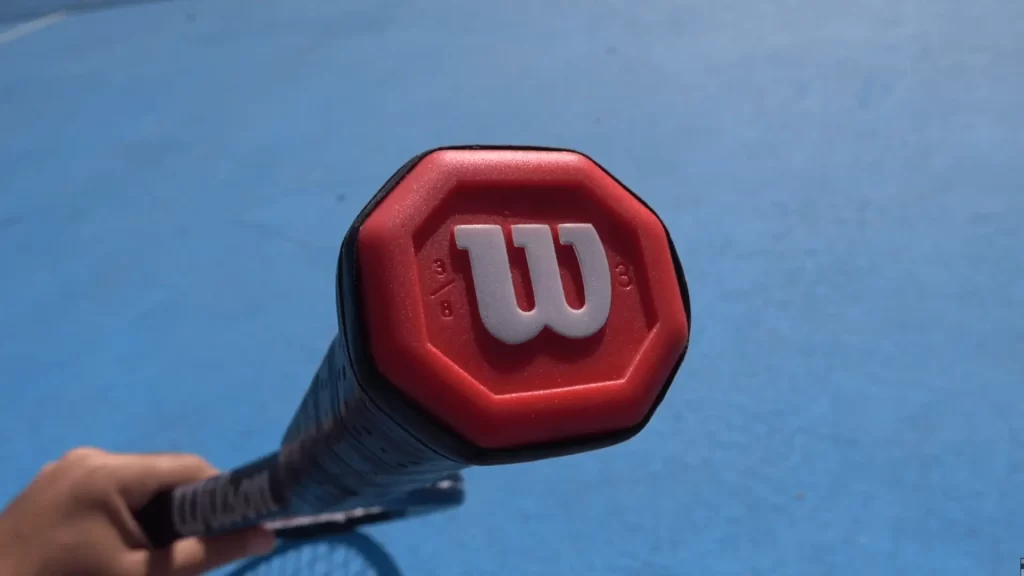
Conclusion:
Understanding the various parts of a tennis racket is important for every player, whether a beginner, amateur, or professional. This is important to maximize your performance on the tennis court. Each part plays a crucial role in determining a racket’s power, control, and maneuverability from the frame to the strings.
By selecting the right racket with the ideal specifications for their playing style, tennis players can enhance their skills and enjoy a competitive edge in the game. In this article, I have provided thorough information on parts of a tennis racket to help you understand the sport better and choose the racket that suits you best.
FAQs:
How does a tennis racquet affect a player’s performance?
A tennis racket affects a player’s performance by influencing their power, control, maneuverability, and comfort on the court. Factors like racket head size, string tension, weight, and balance all play roles in determining a player’s style of play and overall performance in executing shots. The right racket choice aligns with a player’s skill level and playing style. This improves their ability to serve, volley, and rally effectively.
What materials are used to make tennis rackets?
Graphite, carbon fiber, fiberglass, and composite materials are used to make tennis rackets. However, the choice of materials can vary from model to model and manufacturers as well.
How many parts and components are there of a tennis racket?
There are four major parts of a tennis racket, for instance, the frame, the head, the shaft, the throat, and the handle. The head and the handle are further divided into small components.

